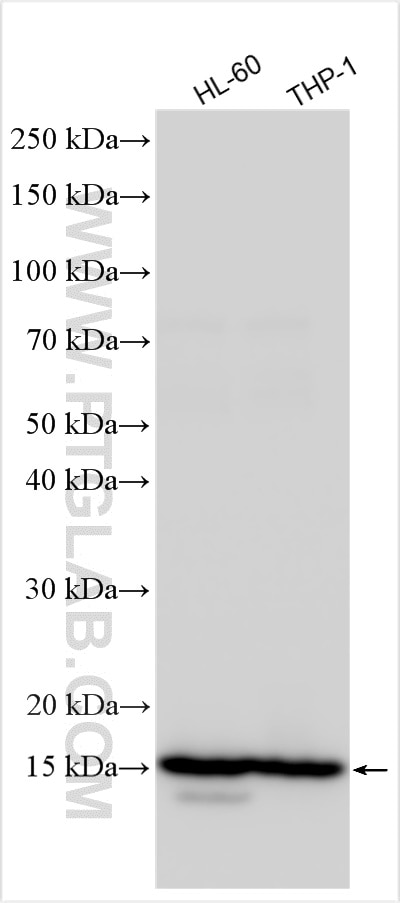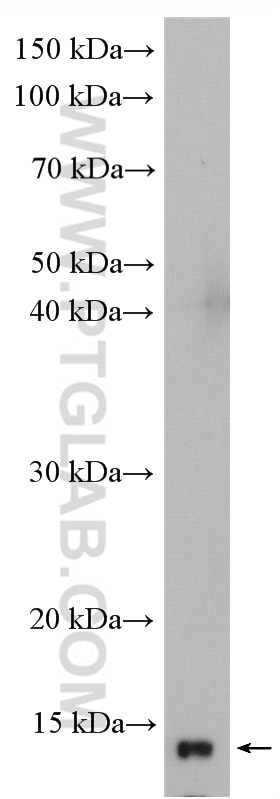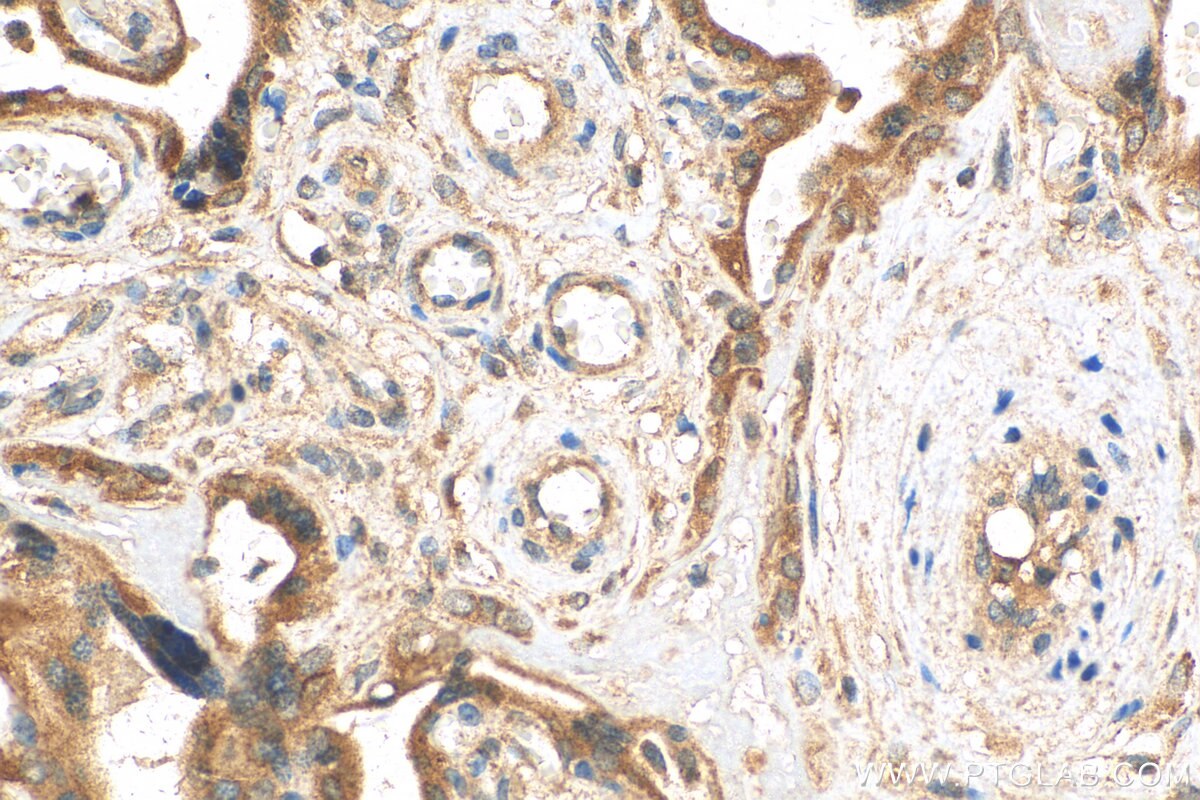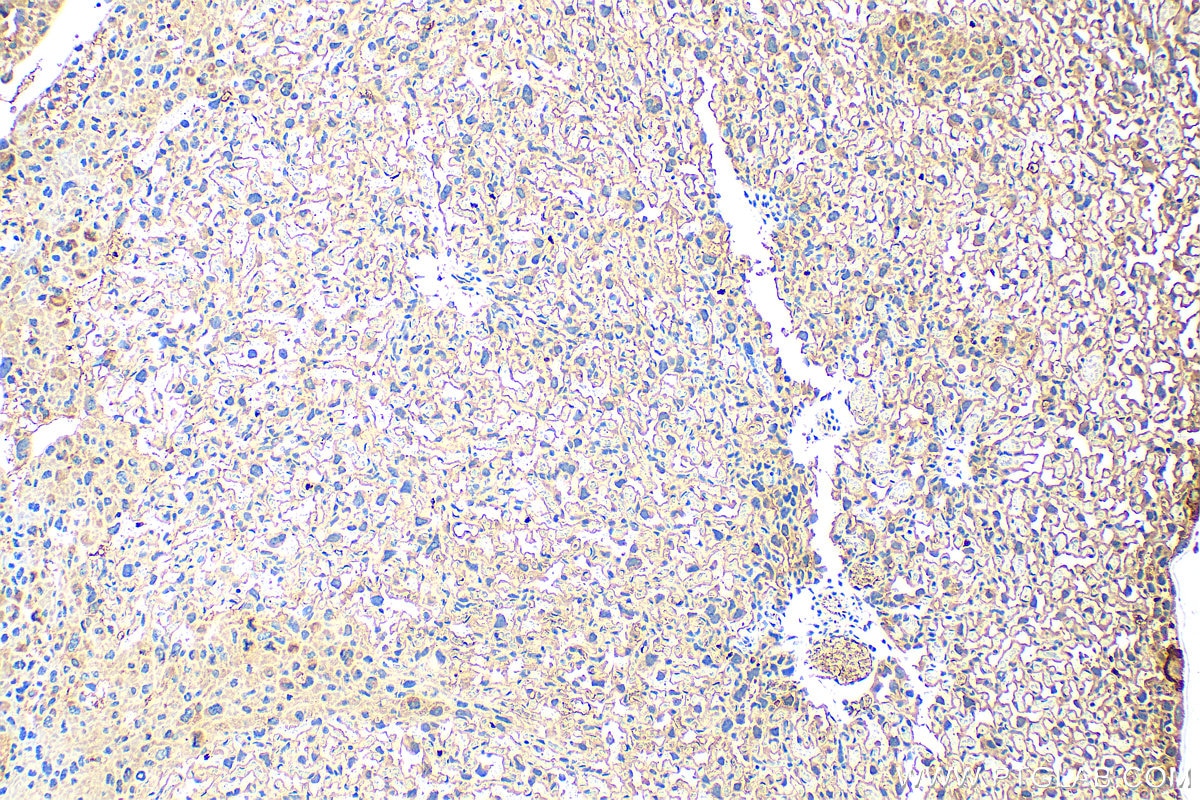Anticorps Polyclonal de lapin anti-VAMP8
VAMP8 Polyclonal Antibody for WB, IHC, ELISA
Hôte / Isotype
Lapin / IgG
Réactivité testée
Humain, rat, souris
Applications
WB, IHC, IF, IP, CoIP, ELISA
Conjugaison
Non conjugué
N° de cat : 15546-1-AP
Synonymes
Galerie de données de validation
Applications testées
| Résultats positifs en WB | cellules HL-60, cellules PC-12, cellules THP-1 |
| Résultats positifs en IHC | tissu placentaire humain, tissu placentaire de souris il est suggéré de démasquer l'antigène avec un tampon de TE buffer pH 9.0; (*) À défaut, 'le démasquage de l'antigène peut être 'effectué avec un tampon citrate pH 6,0. |
Dilution recommandée
| Application | Dilution |
|---|---|
| Western Blot (WB) | WB : 1:1000-1:4000 |
| Immunohistochimie (IHC) | IHC : 1:200-1:800 |
| It is recommended that this reagent should be titrated in each testing system to obtain optimal results. | |
| Sample-dependent, check data in validation data gallery | |
Applications publiées
| WB | See 18 publications below |
| IHC | See 1 publications below |
| IF | See 4 publications below |
| IP | See 2 publications below |
| CoIP | See 2 publications below |
Informations sur le produit
15546-1-AP cible VAMP8 dans les applications de WB, IHC, IF, IP, CoIP, ELISA et montre une réactivité avec des échantillons Humain, rat, souris
| Réactivité | Humain, rat, souris |
| Réactivité citée | rat, Humain, souris |
| Hôte / Isotype | Lapin / IgG |
| Clonalité | Polyclonal |
| Type | Anticorps |
| Immunogène | VAMP8 Protéine recombinante Ag7903 |
| Nom complet | vesicle-associated membrane protein 8 (endobrevin) |
| Masse moléculaire calculée | 11 kDa |
| Poids moléculaire observé | 15 kDa |
| Numéro d’acquisition GenBank | BC001634 |
| Symbole du gène | VAMP8 |
| Identification du gène (NCBI) | 8673 |
| Conjugaison | Non conjugué |
| Forme | Liquide |
| Méthode de purification | Purification par affinité contre l'antigène |
| Tampon de stockage | PBS with 0.02% sodium azide and 50% glycerol |
| Conditions de stockage | Stocker à -20°C. Stable pendant un an après l'expédition. L'aliquotage n'est pas nécessaire pour le stockage à -20oC Les 20ul contiennent 0,1% de BSA. |
Informations générales
VAMP8, also named as endobrevin, is a member of the vesicle-associated membrane protein (VAMP)/synaptobrevin family and the SNARE (soluble NSF-attachment protein receptor) superfamily. Characterized by a common sequence called the SNARE motif, SNARE proteins are involved in membrane fusion and vesicular transport (PMID: 11252968). VAMP8 is involved in autophagy through the direct control of autophagosome membrane fusion with the lysososome membrane. It is required for dense-granule secretion in platelets and plays a role in regulated enzyme secretion in pancreatic acinar cells. VAMP8 is also involved in the abscission of the midbody during cell division, which leads to completely separate daughter cells.
Protocole
| Product Specific Protocols | |
|---|---|
| WB protocol for VAMP8 antibody 15546-1-AP | Download protocol |
| IHC protocol for VAMP8 antibody 15546-1-AP | Download protocol |
| Standard Protocols | |
|---|---|
| Click here to view our Standard Protocols |
Publications
| Species | Application | Title |
|---|---|---|
J Extracell Vesicles Identification of the SNARE complex that mediates the fusion of multivesicular bodies with the plasma membrane in exosome secretion | ||
Autophagy SDC1-dependent TGM2 determines radiosensitivity in glioblastoma by coordinating EPG5-mediated fusion of autophagosomes with lysosomes | ||
Cell Mol Life Sci IGF2BP1-HAX-1 positive feedback loop-mediated HAX-1 overexpression blocks autophagic flux and promotes chemoresistance in nasopharyngeal carcinoma | ||
Arch Toxicol Mystery of methamphetamine-induced autophagosome accumulation in hippocampal neurons: loss of syntaxin 17 in defects of dynein-dynactin driving and autophagosome-late endosome/lysosome fusion. | ||
Ecotoxicol Environ Saf Weakened interaction of ATG14 and the SNARE complex blocks autophagosome-lysosome fusion contributes to fluoride-induced developmental neurotoxicity. | ||
Stem Cell Res Ther Microtubule destabilization caused by silicate via HDAC6 activation contributes to autophagic dysfunction in bone mesenchymal stem cells. |








